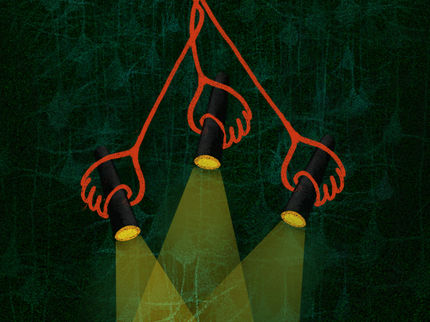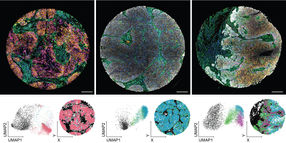Brain cells divide the work to recognize bodies
Specific regions of the brain are specialized in recognizing bodies of animals and human beings. By measuring the electrical activity per cell, scientists from KU Leuven, Belgium, and the University of Glasgow have shown that the individual brain cells in these areas do different things. Their response to specific contours or body shapes is very selective.
Facial recognition has already been the subject of much research. But what happens when we cannot recognize an animal or a human being on the basis of a face, but only have other body parts to go on? The mechanism behind this recognition process is uncharted territory for neuroscientists, says Professor Rufin Vogels of the KU Leuven Laboratory for Neuro- and Psychophysiology.
"Previous research in monkeys has shown that small areas in the temporal lobes - the parts of the brain near the temples - are activated when the monkeys look at bodies instead of objects or faces. Brain scans tell us that these regions of the brain correspond to the ones activated in human beings. But that only tells us which regions are active, not which information about bodies is passed on by their cells."
The KU Leuven scientists measured the electrical activity of individual cells in one of the brain areas responsible for body recognition in rhesus monkeys. Vogels explains: "We showed the monkeys images of bodies of both animals and human beings, while covering up specific body parts. We usually left out the faces, because other brain cells are responsible for recognizing those. With a method developed at the University of Glasgow, we then examined each cell to see which body parts activated it."
"We found that these individual cells in themselves are not body detectors: they respond to specific, frequently found characteristics of bodies, such as the curve of an elbow or a part of a leg. And they divide the work. Each cell has its own speciality and screens the incoming information for certain characteristics. The brain recognizes a body by combining all the pieces of the puzzle: all the bits of information registered by the different cells in a particular region of the brain. The brain cells, in other words, collaborate to solve the puzzle."
In their next project, the scientists want to expand their study to include a number of other brain areas that are also active for body recognition. "If we improve our understanding of how our brains recognize bodies, we can use that knowledge for disorders whereby that particular mechanism is disrupted, such as autism, or for the development of facial-recognition software."
Original publication
Other news from the department science

Get the analytics and lab tech industry in your inbox
From now on, don't miss a thing: Our newsletter for analytics and lab technology brings you up to date every Tuesday. The latest industry news, product highlights and innovations - compact and easy to understand in your inbox. Researched by us so you don't have to.

























































